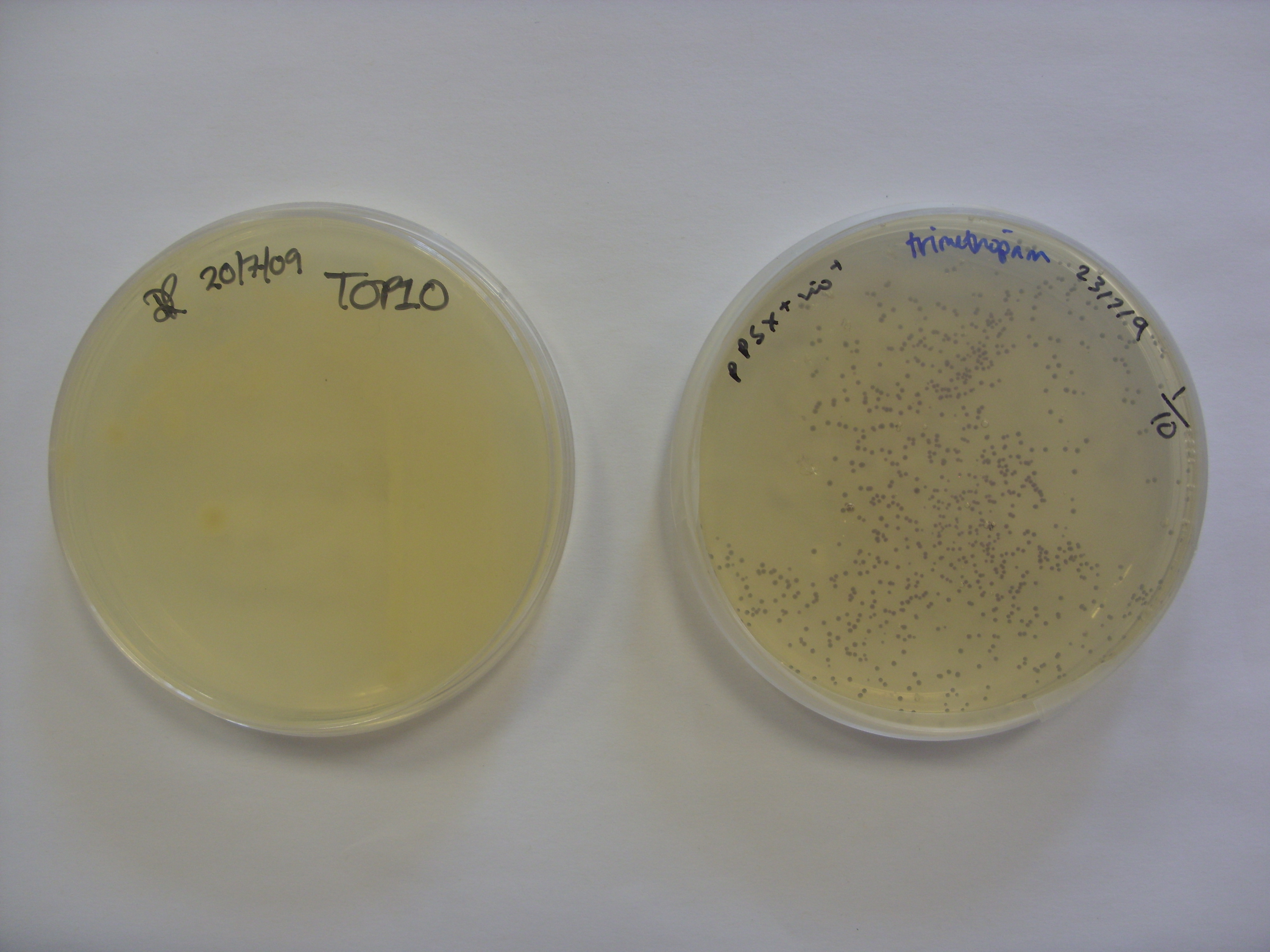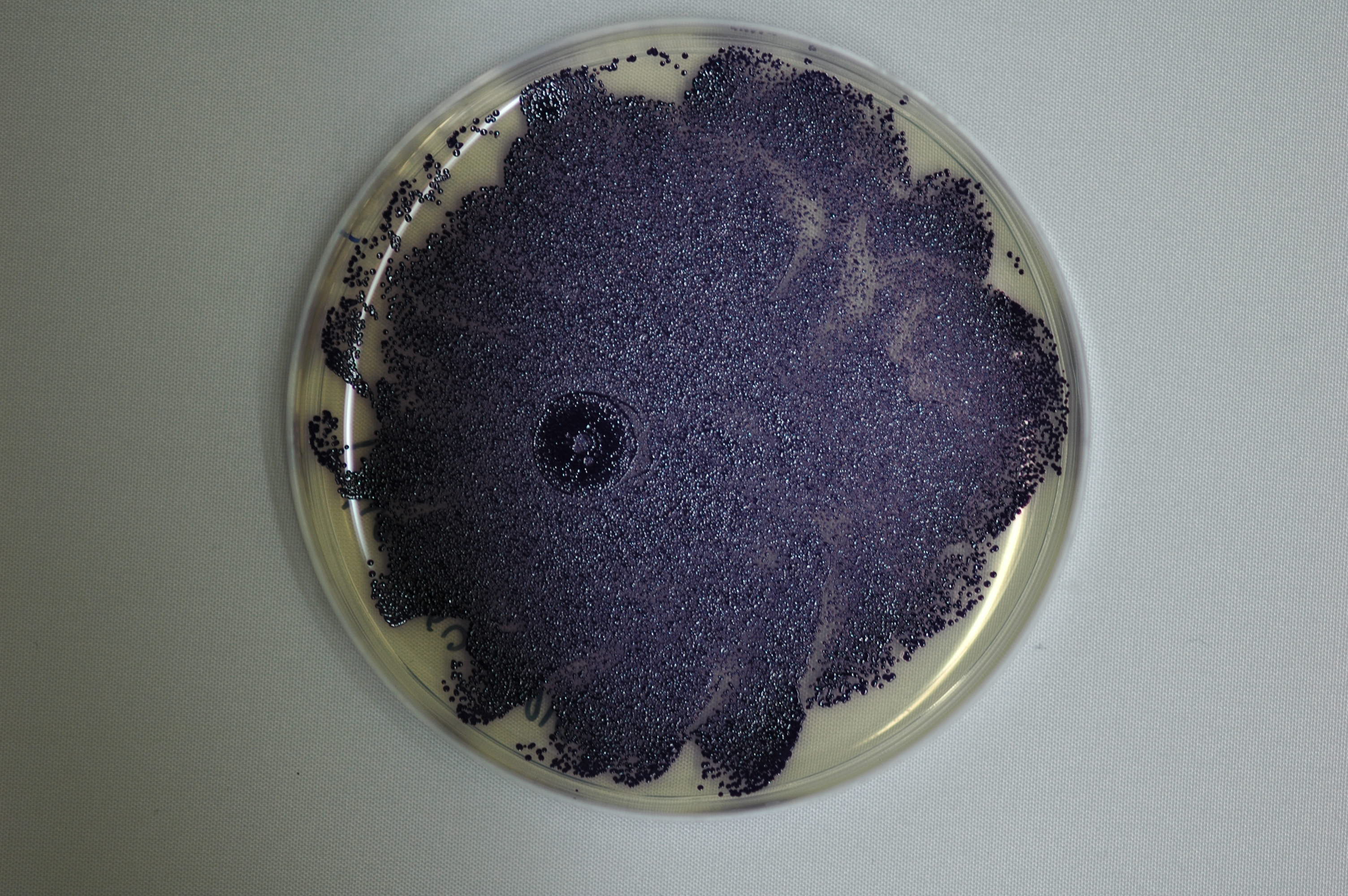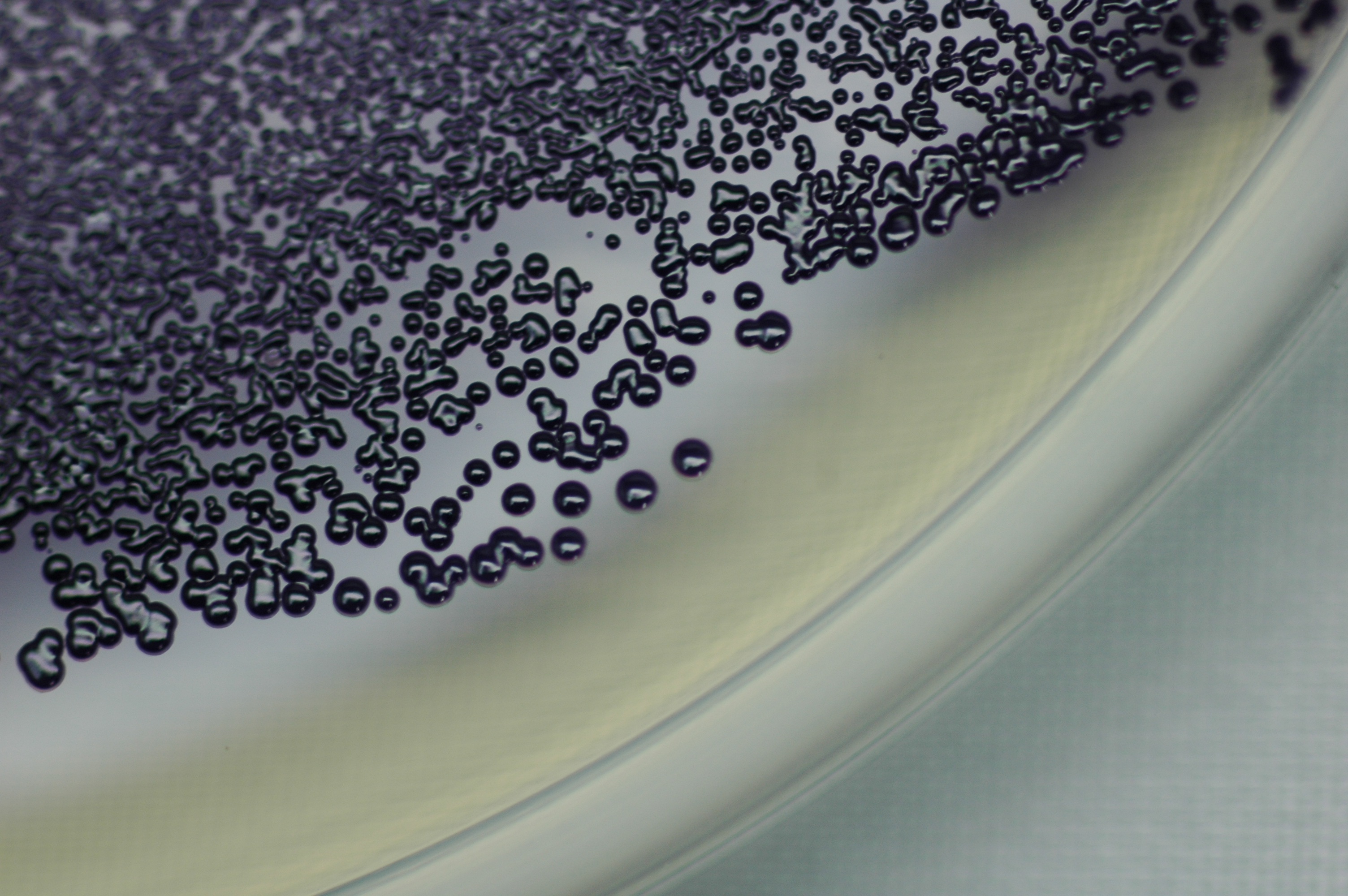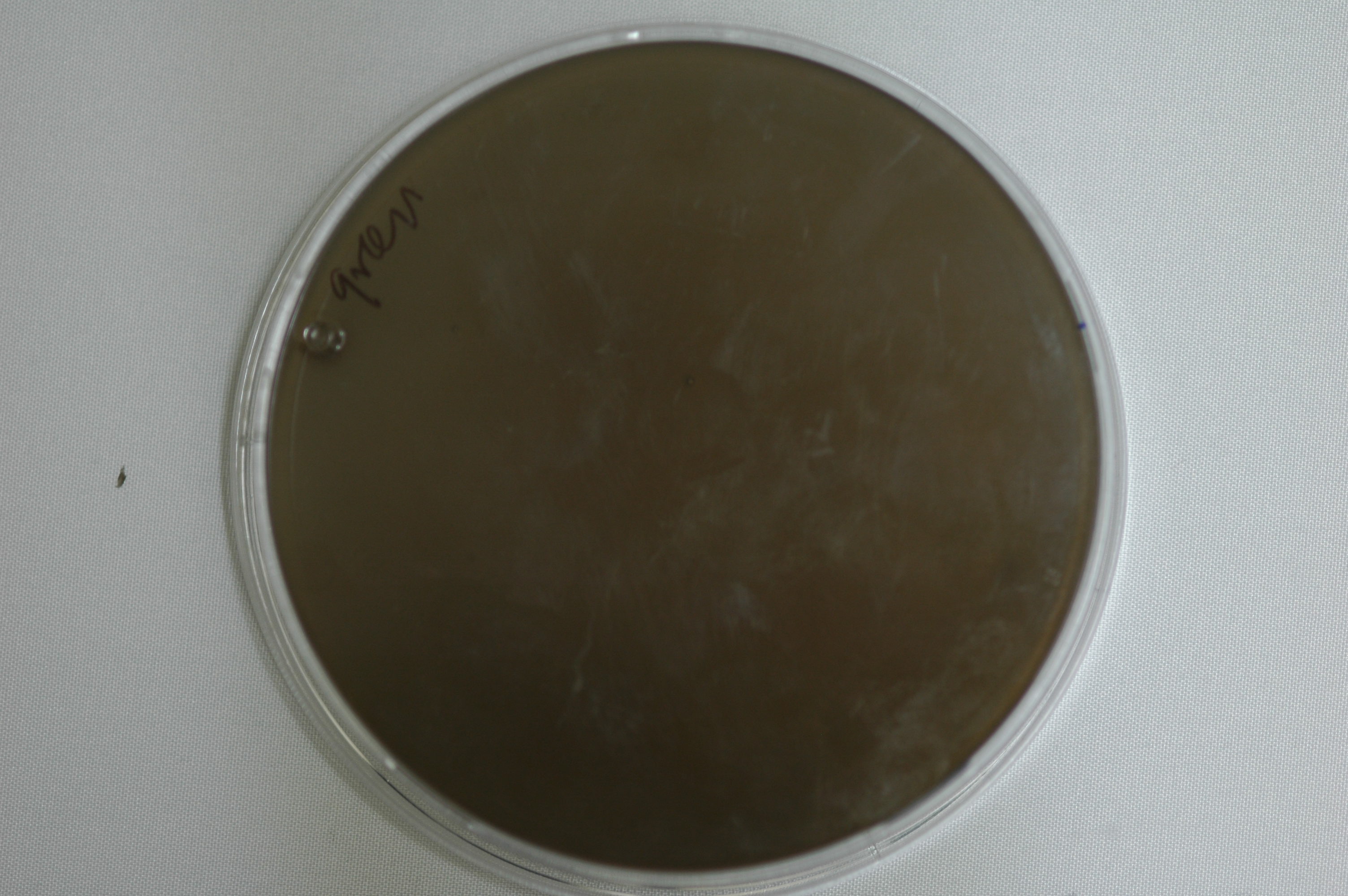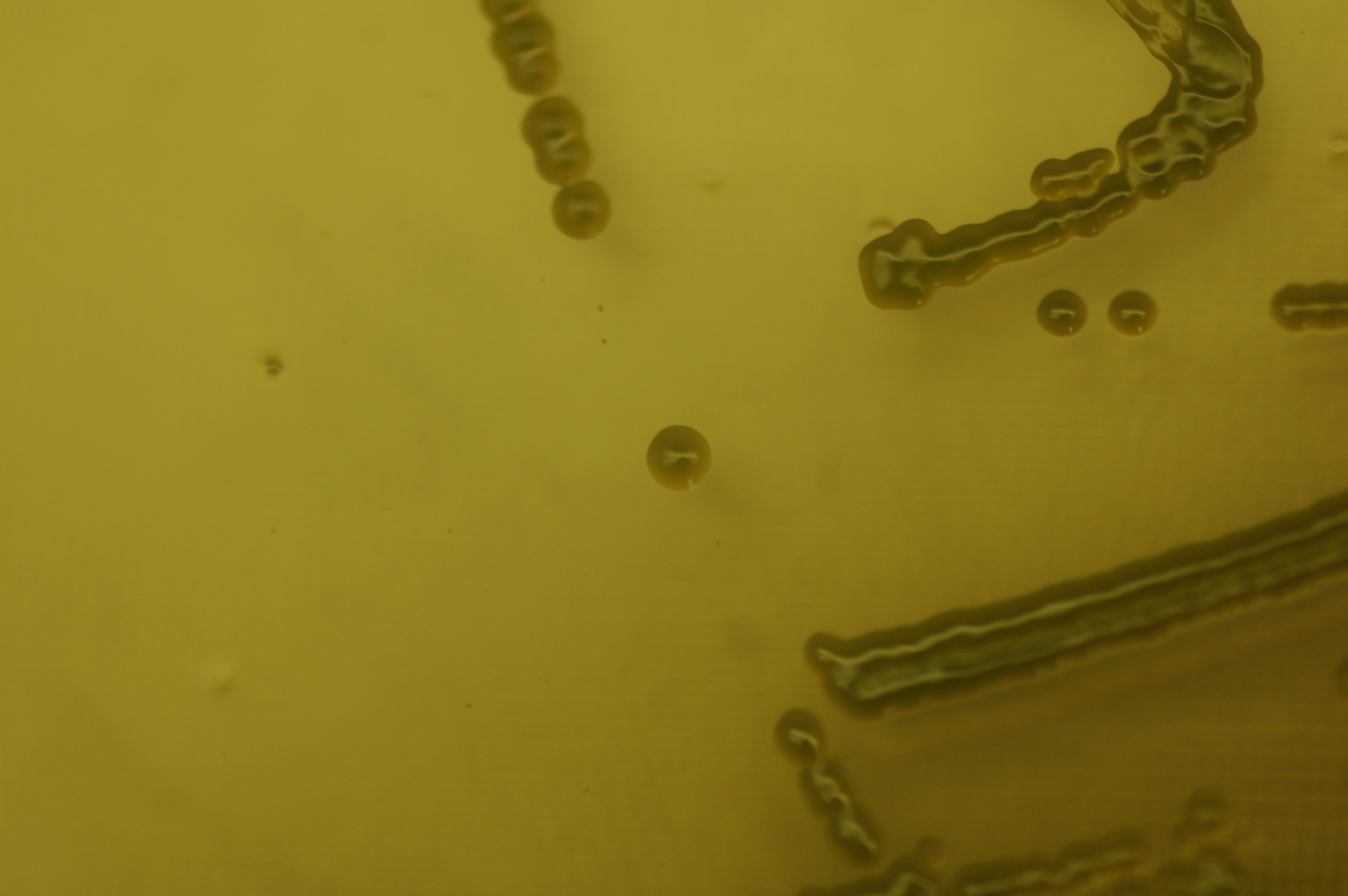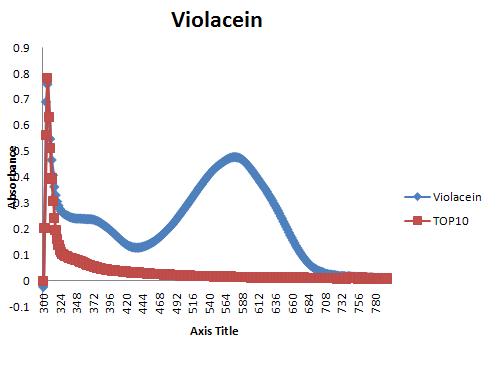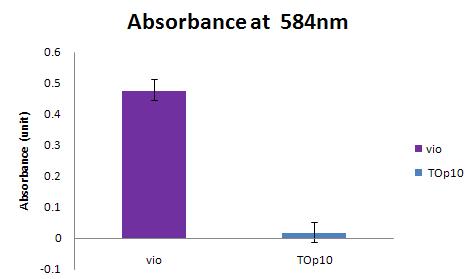Team:Cambridge/Project/VI03
From 2009.igem.org
(→Characterisation) |
(→Characterisation) |
||
| Line 23: | Line 23: | ||
Left: control plate - untransformed TOP10 E. coli, Right: Top10 transformed with pPSX-Vio+. | Left: control plate - untransformed TOP10 E. coli, Right: Top10 transformed with pPSX-Vio+. | ||
| - | '''Pigment | + | '''Multiple Pigment Production from the Violacein operon''' |
| - | + | Top10 transformed with the DNA we received from DNA2.0 showed vibrant pigment production. | |
[[Image:Cam09_vio.jpg|300px]][[Image:Cam09_vio1.jpg|300px]] | [[Image:Cam09_vio.jpg|300px]][[Image:Cam09_vio1.jpg|300px]] | ||
| Line 31: | Line 31: | ||
Left: Violacein growth on agar plate (overnight). Right: Single colonies. | Left: Violacein growth on agar plate (overnight). Right: Single colonies. | ||
| + | Further, we were able to remove VioC or VioD from the operon to produce a green pigment. | ||
Revision as of 23:19, 21 October 2009
Categories :
Project :
-
Overview
Sensitivity Tuner
--- Characterisation
--- Modelling
Colour Generators
--- Carotenoids (Orange/Red)
--- Melanin (Brown)
--- Violacein (Purple/Green)
The Future
Safety
Notebook :
Team Logistics :
Violacein Pigments
Characterisation
Proof of pigment production
Successful Pigment Production
We transformed Top10 with pPSX-Vio+. After three colour eventually appeared, as shown below. Interestingly, the pigment appears to remain within the bacteria, with little or no bleeding into the media. We took the violacein pigment bacteria (right plate in photo) out of the fridge to find that the purple colour had started to develop. They were therefore left at room temperature overnight. The colour appears to be within the bacteria, with little or no bleeding into the media. The control plate (left plate) is the untransformed TOP10 E. coli.
Left: control plate - untransformed TOP10 E. coli, Right: Top10 transformed with pPSX-Vio+.
Multiple Pigment Production from the Violacein operon
Top10 transformed with the DNA we received from DNA2.0 showed vibrant pigment production.
Left: Violacein growth on agar plate (overnight). Right: Single colonies.
Further, we were able to remove VioC or VioD from the operon to produce a green pigment.
Left: Lawn of green bacteria on agar plate (overnight), derived by removing one gene from the violacein cassette. Right: Green colonies on agar plate.
Characterisation of colour output
We characterised the violacein pigment by carrying out the acetone extraction protocol used for carotene. The results were normalised for OD and then plotted as a graph of absorption units against wavelength:
We also looked at absorbance at 584nm (the maximum absorbance for violacein):
 "
"
